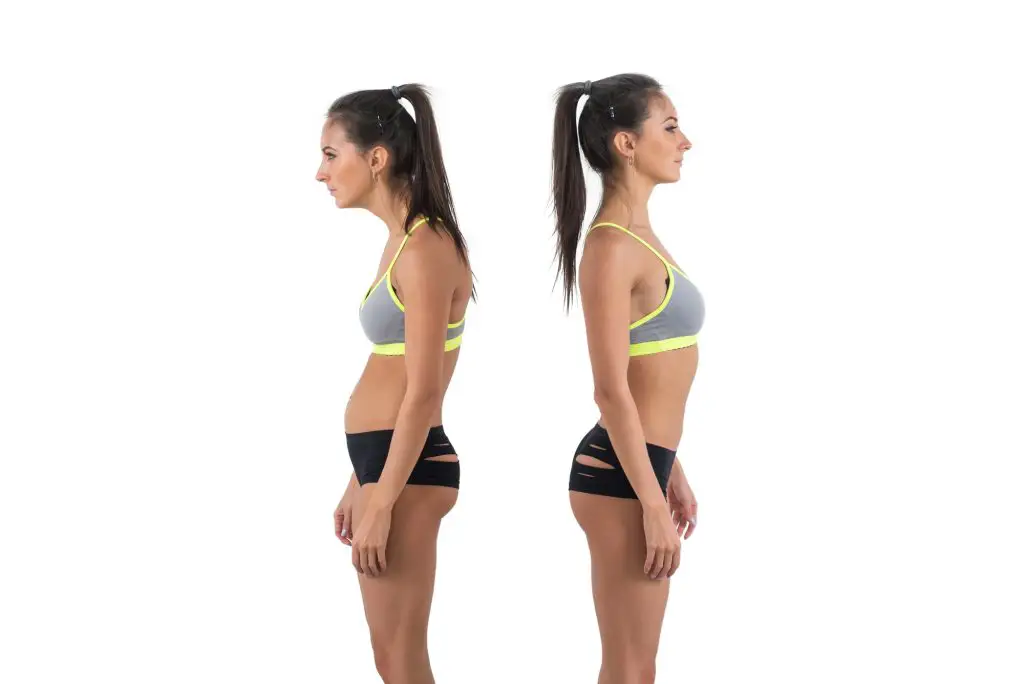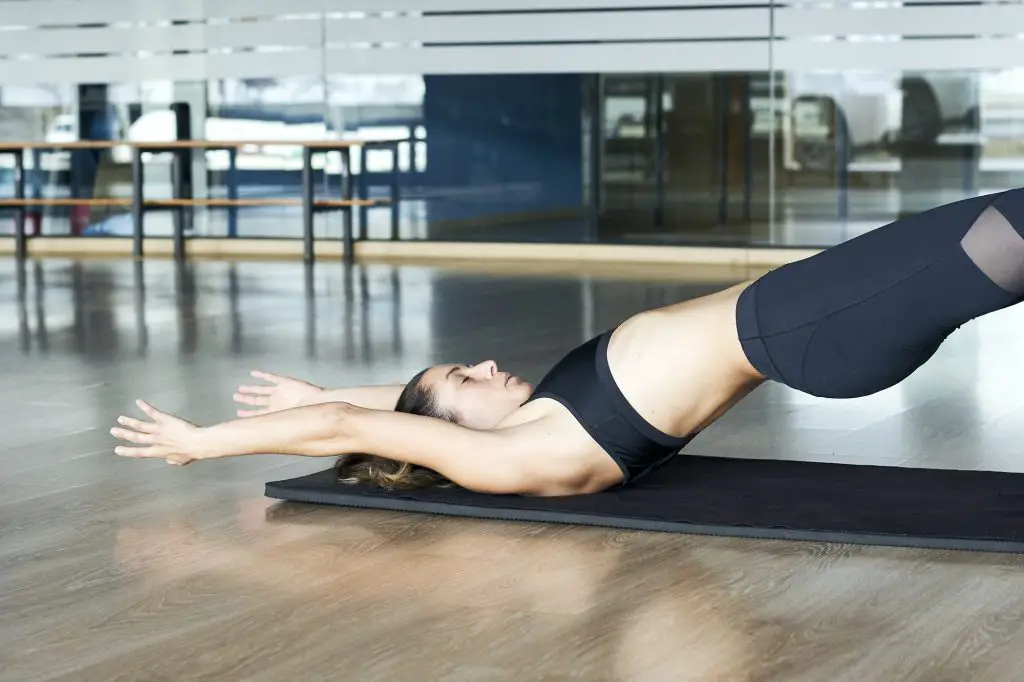Equipment

How to Fix Posture with Pilates
Pilates is a system of exercise with many proven benefits. One of these is improvement of posture. Slouching and poor posture are unfortunate consequences of modern life, with all the time we spend at desks and hunched over mobile devices. But you can start to fix your posture with Pilates.
With Pilates, a focus on core strength, stability, alignment, and other important factors, posture improves. Studies have even proven that regular Pilates practice over several weeks improves posture. If you’re looking to get a good workout, to improve muscle strength and to fix your bad posture, try regular Pilates sessions with a trained instructor.
What Does Pilates Have to Do with Posture?
Founded by Joseph Pilates more than 100 years ago, the practice of Pilates focuses on building strength, particularly in the core. Through exercises done on a mat or with equipment, Pilates builds muscle, increases flexibility, and improves balance and functional movements.
There are many benefits of regular Pilates practice besides the obvious. It can reduce back pain in some people, prevent injuries by improving stability and core strength, improve body awareness, improve mobility, increase energy and improve posture.
Several aspects of Pilates help improve and support good posture:
- Strengthening the right muscles. First and foremost, Pilates exercises put a huge emphasis on strengthening the core. This includes the back, abdominals, glutes, and small muscles along the spine so often neglected. Poor posture mostly results from weak core muscles. As these get stronger, you will naturally sit and stand more upright.
- Balancing muscle strength. Pilates also helps you balance out muscles. For instance, if you are weaker in your back than in your abs, the exercises will correct this imbalance. This naturally has a good effect on posture.
- Aligning the spine. The practice of Pilates is not just about targeting one group of muscles. All the exercises in Pilates are slow and precise. An instructor will ask you to position your body in very specific ways, which helps to align all parts of the body, but most importantly the spine, more correctly.
- Increasing body awareness. These small, specific movements have another effect. They help you become more aware of your body, how it is aligned, and how you move. They also bring awareness to how you hold yourself still. This means that when you’re slumping at your desk at work, you will start to become more aware of it and correct your posture.
Pilates Exercises to Improve Posture
The best way to get postural benefits from Pilates is to work with a trained instructor. A good instructor will take into account your specific needs and goals to design a program for you. They are best situated to focus on improving your posture through the right exercises and by guiding your movements and positioning during a workout.

All Pilates exercises will help with posture, but some are better than others for improving your alignment and awareness. At a basic level, you need to strengthen your core muscles. You also need exercises that bring the focus to your spine, shoulders, neck and back. These are some of the best movements in Pilates if your goal is to work on posture:
- The Pelvic Curl. Begin lying on your back on a mat, feet flat on the floor and knees up. Engage your abdominal muscles as you press your entire spine, including the lower back, into the floor. Curl your spine up, starting at the base as you lift the hips off the floor. You should be resting on your shoulder blades before using your abs to slowly straighten your spine and lower down to the starting position.
- The Plank. This classic Pilates position is one of the best all around exercises for strengthening the core. It also provides practice for holding your spine in a neutral position. To do the plank, place your hands on the floor beneath your shoulders. With your toes on the floor, lift your body up to what looks like a pushup position. Hold as long as you can in good form, which means there is no sagging or bending in the body. It should be a straight line from head to heels.
- The Roll Up. This exercise strengthens the abs but also helps build spinal awareness. Lying on your back on a mat, keep your legs straight and your arms over your head. Bring your arms up and begin rolling the spine as you lift to a sitting position and reach over your toes. This movement should be slow and focused. Lower back down just as slowly.
- The Spine Twist. This move strengthens the core and improves spine flexibility and mobility. Sit on the mat with your legs straight out in front of you, toes pointed up. Lift your arms out straight to each side and sit upright, shoulders down. Twist slowly to one side and then the other, focusing on keeping your spine straight.
Do Posture Correctors Work?
You can do Pilates entirely with mat work, never using reformers or other equipment. However, the equipment can be useful in extending your workout and meeting specific goals, like correcting posture. Also known as a barrel or arc, a posture corrector is a versatile tool designed for doing a variety of exercises and stretches.
Shaped like half of a barrel, sometimes with extensions, the posture corrector can help you align your spine. It also stretches out the shoulders, back, abdominals and other muscles that get tight from hunching over a desk. Posture correctors can help, but they are just one part of an overall workout for developing better posture.
Finding Your Best Posture While Standing
Once you have spent some time strengthening your core and becoming more aware of spine alignment while doing Pilates, practice focused good posture daily. It will start to get easier as you spend more time on the exercises. Try this series standing sideways in front of a mirror to work on better posture:
- Stand with legs straight but not locked. Your feet should be right under your hips.
- Rock back and forth gently to find the position in which your weight is right in the middle of your feet.
- Activate or squeeze your core muscles.
- Find a neutral spine position, which means that your spine curves naturally. Focus on your pelvis and make sure it is neither curved forward nor backward. You should have a natural, not forced, arch in your lower back.
- Relax, open your chest, and drop your shoulders down so there is no tension in them.
- Look at your position in the mirror to check that your ankles, knees, hips, shoulders, and ears are all in a straight line. You should feel your core holding you up.
How to Fix Posture While Sitting
Proper sitting posture at computer desks is very similar to standing posture. If you’re like most people, you spend a lot of your day sitting. This is where many of us get our bad posture. If you don’t focus on posture or if you have weak core muscles, you will begin to slump forward over your desk. Your shoulders round forward, your spine curves, and your neck shifts out, over the desk.
The best posture for sitting at a desk all day is upright with a neutral spine. It’s not easy to achieve without practice. The more you do Pilates exercises and practice good standing posture, the easier it becomes to sit properly at a desk.
This sitting spinal mobility and posture series will help you correct and practice good desk posture:
- Sit in your chair with your knees bent and feet flat on the floor. You can also do this series sitting cross-legged on the floor.
- Hold your spine straight and upright with shoulders down and relaxed, eyes straight forward.
- Press down on your legs with your hands as you lift your chest up, extending the upper spine a little bit over the lower spine. Look up as you do this.
- Tuck your chin down and roll the upper spine forward. Don’t let the chest collapse inward. Keep your core engaged.
- Lift your right arm up over your head and lean to the right, spine straight. Repeat on the other side.
- Arms down again, twist your spine to one side and back to center and the other side.
Repeat this series a few times once a day to work on spine mobility, sitting alignment and core strength. As you begin to build muscles and become more aware of your spine’s position, you can actively begin to sit with better posture. Here is a quick exercise to find your neutral sitting posture:
- Sit at the edge of your chair, feet flat on the floor.
- Slouch forward, rounding your shoulders and neck forward.
- Pull your shoulder and neck back into an upright, tall sitting position. Really push your lower back in to get a curve in it. This should feel forced.
- Hold the unnatural position for a few seconds and the relax it just slightly. This is your correct position for sitting with good posture.
- Scoot back so that you’re just touching the back of the chair.
Practice this several times until you can easily settle into the right posture. Also, make sure your chair and desk are set up correctly for your body. For instance, adjust the height of the chair so that your feet are flat on the floor with your knees bent at a 90-degree angle.
Knowing how to permanently fix posture is not a mystery. It’s as simple as building the right muscles and practicing greater body awareness. With time and practice, your posture will improve, lessening pain and tension in your back, neck and shoulders.




